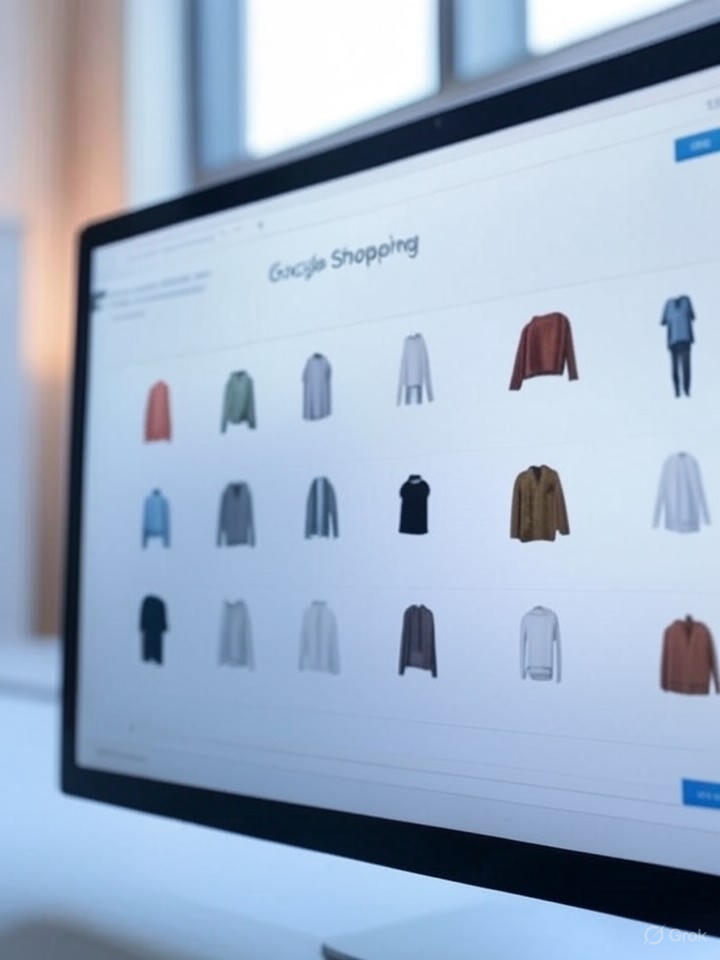Evolving Interfaces in E-Commerce Search
In the ever-competitive world of online retail, Google continues to refine its Shopping platform with subtle yet impactful changes aimed at enhancing user navigation and discovery. Recent observations indicate that Google is testing clickable submenus within its Shopping category pages, allowing users to drill down into subcategories more seamlessly. This development, spotted by industry watchers, introduces a layer of interactivity that could streamline the shopping experience, making it easier for consumers to filter products without reloading pages or navigating complex hierarchies.
The feature appears as a horizontal menu at the top of category pages, where clicking a subcategory instantly refines the product listings below. For instance, searching for electronics might reveal submenus like “laptops” or “smartphones,” with real-time filtering upon selection. This isn’t entirely novel in e-commerce—platforms like Amazon have long employed similar dynamic filters—but its integration into Google Shopping signals a push toward more intuitive interfaces, potentially boosting user engagement and conversion rates for merchants.
Insights from SEO Experts and Recent Tests
According to a report from Search Engine Roundtable, this test was first highlighted by Sachin Patel, an SEO specialist who shared screenshots on X (formerly Twitter) showing the clickable elements in action. The update aligns with Google’s broader strategy to make search more interactive, as evidenced by other recent experiments like customizable price tracking and AI-driven virtual try-ons. Posts on X from users like Patel suggest this could be a widespread test, with some noting its appearance as early as late July 2025, prompting discussions among digital marketers about its implications for product visibility.
Beyond the submenus, Google has been rolling out complementary features. A 9to5Google article detailed how users can now set personalized price alerts directly in Search, tailoring notifications to specific budgets or brands. This ties into the submenu enhancements by creating a more cohesive ecosystem where refined categories lead to targeted deals, encouraging longer sessions on the platform.
Impact on Merchants and Advertisers
For retailers feeding products into Google Merchant Center, these changes underscore the importance of accurate categorization. As outlined in Google’s own Merchant Center Help documentation, products are auto-assigned to categories based on taxonomy, but precise titles and descriptions can influence placement. With clickable submenus, miscategorized items risk being buried, potentially affecting ad performance in Shopping campaigns.
Industry analysts, including those at DataFeedWatch, have noted in their 2023 overview (updated through 2025) that such UI tweaks often precede larger algorithmic shifts. Merchants are advised to optimize feeds promptly, using tools to fix common errors as recommended in a Store Growers guide published in June 2025. This proactive approach could mitigate disruptions and capitalize on increased traffic from refined searches.
Broader Context of AI and Personalization
These submenu tests fit into Google’s aggressive incorporation of AI in shopping, as announced in a Google Blog post just a week ago. Features like photorealistic image generation for product matching, highlighted in X posts from users like Roni Rahman, allow shoppers to visualize items based on descriptive searches. Combined with the new submenus, this creates a powerful discovery tool, where users might start with a broad category, click into submenus, and then use AI to refine further.
However, not all feedback is glowing. Some X discussions point to potential overload, with too many filters confusing casual users. A Opositive news piece from May 2025 described similar submenu tests under the main search bar, suggesting this is part of an iterative process. Google hasn’t officially confirmed the rollout, but if history is a guide—from past updates like the 2023 Shopping tab enhancements shared by Google Search Central on X—these could become standard soon.
Strategic Implications for the Future
Looking ahead, this evolution may pressure competitors to innovate similarly. As e-commerce giants vie for attention, Google’s moves could set benchmarks for user-centric design. For insiders, monitoring tools like Google Search Console, as promoted in 2023 updates from Google itself, will be crucial to track how these changes affect product impressions and clicks.
Ultimately, while the clickable submenus might seem minor, they represent Google’s commitment to frictionless shopping. By blending seamless navigation with AI personalization, the platform aims to not just facilitate purchases but anticipate needs, potentially reshaping how billions shop online in the coming years.




 WebProNews is an iEntry Publication
WebProNews is an iEntry Publication